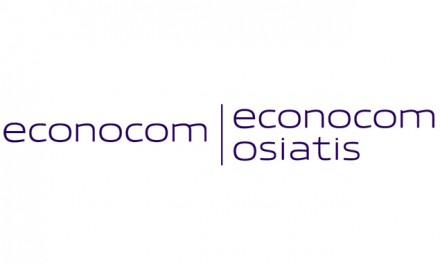
Being able to use an asset at any time without owning it? The concept is attractive. It is at the very heart of the usage economy, which is now everywhere in our daily lives: IT-as-a-service, mobile-as-a-service, furniture-as-a-service…
Switching to the usage economy allows us to benefit from its many societal, environmental and financial advantages. It also contributes to the development of a whole new economic logic.
However, even if the idea is gaining ground, mentalities are slowly changing. Many companies are still hesitant and cautious when it comes to giving up ownership of their assets. They consider the subscription model to be costly and hard to implement. Old habits? Fears? Let’s have a look at the preconceived ideas in business about the usage economy. Preconceived ideas which, as you will see, often turn out to be false in practice, because businesses have everything to gain from the usage economy.
The usage economy, what is it all about?
Usage economy, also known as functionality economy, is a transaction model where the sale of the use of an asset replaces the sale of the asset itself. This, for example, was the choice made by Xerox in the late 1970s when they decided to no longer sell photocopiers but contracts for photocopying services. More recently, this model has been established in sectors such as the automobile industry, information technology and, strangely enough, drinks dispensers.
This paradigm shift finds its source in the United States and has been spreading, particularly since the early 2000s with the rise of SaaS (Software-as-a-Service), which has developed the habit of subscribing instead of purchasing licenses systematically. In fact, through the subscription model, SaaS have come to smooth out the services associated with their use over time and avoid buying goods that need to be renewed frequently due to their obsolescence.
Thus, subscription-based solutions are gradually moving us from a system of ownership to one of service (some people talk about “servitization”). Far from being limited to IT, this change of model affects all economic sectors.
In short, pay-as-you-go makes it possible to transfer all the risks linked to ownership to an expert service provider who is in charge of managing them.
#01 – “Switching to economy of use costs more”
False! This new model is creating value. To be effective for the company that rents you equipment, they must ensure their reliability and optimise the maintenance of their products (since they retain ownership) and ultimately their lifespan. These are designed with a long-term service and cost reduction approach. An approach that is part of the fight against “all disposable”.
Solutions such as as-a-Service allow the regular replacement of equipment and the recognition of its future resale value. This helps reduce budgets and avoid the survival of equipment that is out of use and which is detrimental to the company’s brand image and team satisfaction. A subscription model is therefore more financially attractive as opposed to having to systematically purchase new advanced equipment.
#02 – “The economy of functionality is only for large companies”
False! On the contrary, this new model makes it possible to be less confronted with the notion of size. In fact, it was invented to address the entire market and makes it easier to market to companies with a small sales force. The implementation of a subscription-based solution makes it easier to automate payments, process invoices and manage accounting, thus avoiding costly fees or recruitment for small organisations.
The usage model often results in lower costs and lower volumes, making it ideally suited for small businesses and SMEs, and allows them to be more competitive against larger companies (by eliminating the volume advantage needed in a sales model).
#03 – “It’s a new concept, therefore risky”
Not true! Change has always been scary, and for many companies, newness represents a risk.
As soon as the usage model arrives in a given market, it tends to make it explode in volume and completely reshuffle the cards between the different players in that market. This is why newcomers have been able to establish themselves very quickly in already mature markets, as was the case with the software market.
The real risk would actually be to miss out on the tremendous opportunity represented by usage economy. And worse, to see your competitors grab it.
#04 – “My products cost too much, selling them for use would put my company at risk”
Totally wrong! The usage model applies to all types of products, regardless of their costs. The example of the photocopying industry has allowed company margins to explode. By retaining ownership of their copiers, companies have been able to manage their entire lifecycles more closely. Their maintenance has doubled the cost of labour compared to the old model of selling new machines… But this extra cost has been more than offset by the systematic reuse of equipment by the industry.
Thus, some companies have given up the sale of expensive products (the photocopier, for example) in favour of selling the use of the machine (photocopies invoiced per unit). This has enabled them to rework their value chain upstream and make huge savings in raw materials.
#05 – “The usage model is not used by most companies”
100% wrong! Even if it is not always visible to the general public, it is very often used by companies in practice. It is even an integral part of our daily life. For example, when we travel on an Airbus plane, we are not necessarily aware that certain parts of the plane (engines, landing gear, etc.) belong to other companies.
However, this is again a model of usage, where Airbus rents a service: that of having functional aeronautical parts permanently available. If one of these parts is no longer available, Safran collects it from one of its MRO (Maintenance, Repair and Operations) centres and immediately sends a new one back to Airbus: an operation in which both players benefit.
#06 – “Not everything can be turned into a subscription model”
Also incorrect. It seems that the usage economy can adapt to any type of market and product. Even traditional companies, characterized by their highly hierarchical structures and product orientated values, can reinvent themselves and include the subscription model in their strategy. This allows them to increase market share and build customer loyalty.
Take the saturated and highly competitive household appliance market as an example: it is possible to design a model based on the rental of goods (washing machines, dishwashers, etc.) by customers (B2B as well as B2C) so that they can benefit from the continuous renewal of the range in the event of breakdowns or new products. The company that succeeds in implementing this usage-oriented sales strategy will gain an undeniable advantage over its competitors.
#07 – “I sell to professionals, I can’t convert to economy of use”
That’s not true. Far from being limited to B2C markets, the economy of use concerns as much, if not more, B2B. For example, Michelin offers a subscription model for its tyres to its professional customers. Instead of selling tyres, the manufacturer offers a service for monitoring, maintaining and replacing the tyres on their truck fleets. Michelin therefore remains the owner of the tyres and the carriers delegate their management by paying a fee based on the number of kilometres travelled by the trucks.
This “pay-as-you-go” system is very popular with professional customers. They greatly appreciate being able to benefit from “à la carte” services offered by experts in their fields while delegating to them the tasks which are operational constraints.
#08 – “My sales will go down by switching to a subscription model”
False again! It’s generally thought that rentals are less profitable at the end than straightforward sales. This is not true. First of all, you often reach the same amount of turnover as with classic sales, or even more with customers who renew equipment rentals. Secondly, you keep your customers over time, as they are not interested in cancelling the rental contract with you but in making it evolve according to their wishes.
Incorporating economy of use into your strategy translates into a renewal of the value offered on a market. This will undeniably make the difference and establish a relationship of trust with your customers, reassured by a perennial contractual framework that meets their need for use. For example, by offering mileage tracking to its customers, based on their use, Michelin ensures their loyalty over time.
#09 – “The economy of use is hard to implement”
Not true! Turning your product into a service actually means refocusing your business model on the end user. While this also means adapting your solutions and learning new ways of selling, it is not necessary to question everything, especially if you are accompanied by an expert like Econocom who will be able to support you in this process and offer solutions specifically adapted to your business.
It’s worth the effort; switching to an as-a-Service model is an excellent way to modernise your offer, to differentiate yourself and to be more competitive. In addition, it allows you to adapt to a consumer trend that is undoubtably strengthening in B2B. With Econocom, this evolution does not represent any cost for you.
The usage economy represents a disruptive source of B2B opportunities that should not be missed. Want to learn more about ways to implement an as-a-Service model adapted to your business? At Econocom, we are masters on the subject: contact us.
















